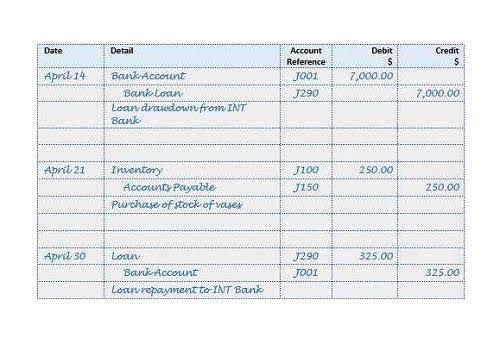“It’s also important to know that a company with high debt will get a higher interest rate on future loans because the risk to lenders is higher,” says Bessette. In general, a bank will interpret a low ratio as a good indicator of your ability to repay debt or raise other loans to pursue new opportunities. A high ratio, on the other hand, indicates a substantial dependence on debt and could be a sign of financial weakness. Overall, the Debt to Asset Ratio is an invaluable tool for assessing a company’s financial health and risk profile. While it has its limitations, it can be very useful as long as it is used critically as part of a broader analysis. Basically it illustrates how a company has grown and acquired its assets over time.

Is a Low Total Debt-to-Total Asset Ratio Good?
The debt to asset ratio is a leverage ratio that indicates the portion of a company’s assets financed with debt. In other words, it defines the total amount of debt relative to assets owned by the company. This leverage ratio is also used to determine the company’s financial risk. Therefore, a company with a high degree of leverage may find it more difficult to stay afloat during a recession than one with low leverage. It should be noted that total debt measure does not include short-term liabilities such as accounts payable and long-term liabilities such as capital lease and pension plan obligations. One shortcoming of the total debt-to-total assets ratio is that it does not provide any indication of asset quality since it lumps all tangible and intangible assets together.

What Does the Total Debt-to-Total Assets Ratio Tell You?
Solvency Trends for Illinois Grain Farms: The Distribution of Debt-to-Asset Ratios by Gross Farm Returns – University of Illinois Urbana-Champaign
Solvency Trends for Illinois Grain Farms: The Distribution of Debt-to-Asset Ratios by Gross Farm Returns.
Posted: Fri, 26 Apr 2024 07:00:00 GMT [source]
In most cases, this is considered a very risky sign, indicating that the company may be at risk of bankruptcy. If its assets provide large earnings, a highly leveraged corporation may have a low debt ratio, making it less hazardous. Contrarily, if the company’s assets yield low returns, https://www.bookstime.com/ a low debt ratio does not automatically translate into profitability. The debt ratio doesn’t reveal the type of debt or how much it will cost. The periods and interest rates of various debts may differ, which can have a substantial effect on a company’s financial stability.
Cons of Debt Ratio
- With more than $13 billion in total debt, it’s easy to understand why Sears was forced to declare Chapter 11 bankruptcy in October 2018.
- If you do choose to calculate your debt-to-asset ratio, do so on a regular basis so you can track any increases or decreases in your number and act accordingly.
- But have you ever wondered what’s going on behind the scenes when you apply for a loan or credit?
- In the case of a lower debt-to-asset ratio, the company signals that its asset side is much more than its liabilities side.
- Highly leveraged companies are often in good shape in growth markets, but are likely to have difficulty repaying debt during market downturns.
- As parents, we’re the ones who know best when it comes to managing everyday family finances.
We may earn a commission when you click on a link or make a purchase through the links on our site. All of our content is based on objective analysis, and the opinions are our own. In a low-interest-rate environment, borrowing can be relatively cheap, prompting companies to take on more debt to finance expansion or other corporate initiatives. Different industries have varying levels of capital requirements, operational risks, and profitability margins. Because of such widespread practices, each will result in a different debt-to-asset ratio; hence, a comparison of debt-to-asset ratio may not be accurate. Using this ratio with a combination of other ratios may help increase investors’ predictability.
Depending on averages for the industry, there could be a higher risk of investing in that company compared to another. Like consumer lenders, financial institutions look at the debt-to-asset debt to asset ratio ratio when deciding whether to extend credit to a business. Buying a home is a big milestone, and banks want to see that you can afford future payments before approving your mortgage.
- It represents the proportion (or the percentage of) assets that are financed by interest bearing liabilities, as opposed to being funded by suppliers or shareholders.
- Creditors use the ratio to see how much debt the company already has and whether the company can repay its existing debts.
- “Bailey answered that he had some ideas but was not prepared to discuss that topic during their first meeting.”
- As noted above, a company’s debt ratio is a measure of the extent of its financial leverage.
- To calculate the debt-to-asset ratio, you must consider total liabilities.
- Like consumer lenders, financial institutions look at the debt-to-asset ratio when deciding whether to extend credit to a business.
- Besides his extensive derivative trading expertise, Adam is an expert in economics and behavioral finance.
In the example below, the debt-to-total assets ratio is 54% for year 1 and 61% for year 2. This means that in the first year, creditors owned 54% of the assets, whereas in the second year, this percentage was 61%. Because a ratio greater than 1 also indicates that a large portion of your company’s assets are funded with debt, it raises a red flag instantly. It also puts your company at a higher risk for defaulting on those loans should your cash flow drop. You will need to run a balance sheet in your accounting software application in order to obtain your total assets and total liabilities.
Ask a Financial Professional Any Question
Let’s look at a few examples from different industries to contextualize the debt ratio. This calculation generally results in ratios of less than 1.0 (100%). Adam Hayes, Ph.D., CFA, is a financial writer with 15+ years Wall Street experience as a derivatives trader. Besides his extensive derivative trading expertise, Adam is an expert in economics and behavioral finance. Adam received his master’s in economics from The New School for Social Research and his Ph.D. from the University of Wisconsin-Madison in sociology.

Why You Can Trust Finance Strategists
- One shortcoming of this financial measure is that it does not provide any information about the quality of assets.
- In doing this kind of analysis, it is always worth scrutinizing how the figures were calculated, in particular regarding the calculation of Total Debt.
- Debt ratio provides insights into a company’s capital structure by showcasing the balance between debt and equity.
- Total debt-to-total assets may be reported as a decimal or a percentage.
- This phenomenon is referred to as a trend line, and a gradual upward trend in the trend line indicates that the company is reluctant to fulfill its financial debts.
- The debt-to-asset ratio can be useful for larger businesses that are looking for potential investors or are considering applying for a loan.
A ratio greater than 1 shows that a considerable amount of a company’s assets are funded by debt, which means the company has more liabilities than assets. A high ratio indicates that a company may be at risk of default on its loans if interest rates suddenly rise. A ratio below 1 means that a greater portion of a company’s assets is funded by equity. Companies also turn to loans and credit cards for different goals, such as supporting cash flow needs or paying for unexpected expenses. Before approving a business loan or credit card, the lender will evaluate the company’s debt-to-asset ratio and liquidity.
Recent Comments